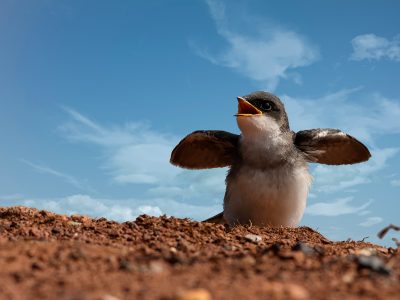Photos courtesy of Danielle Fraser and the Canadian Museum of Nature
By Dan Rubinstein
When Zoe Landry was heading into her fourth year in Carleton University’s Earth Sciences program, she needed to find a focus for her honours research thesis.
Adjunct Prof. Danielle Fraser, a paleobiologist at the Canadian Museum of Nature, invited Landry to visit the museum’s expansive collection of fossils at its facility in Gatineau, Que.
They walked and talked amid the bones and skulls and came upon some gray wolf specimens.
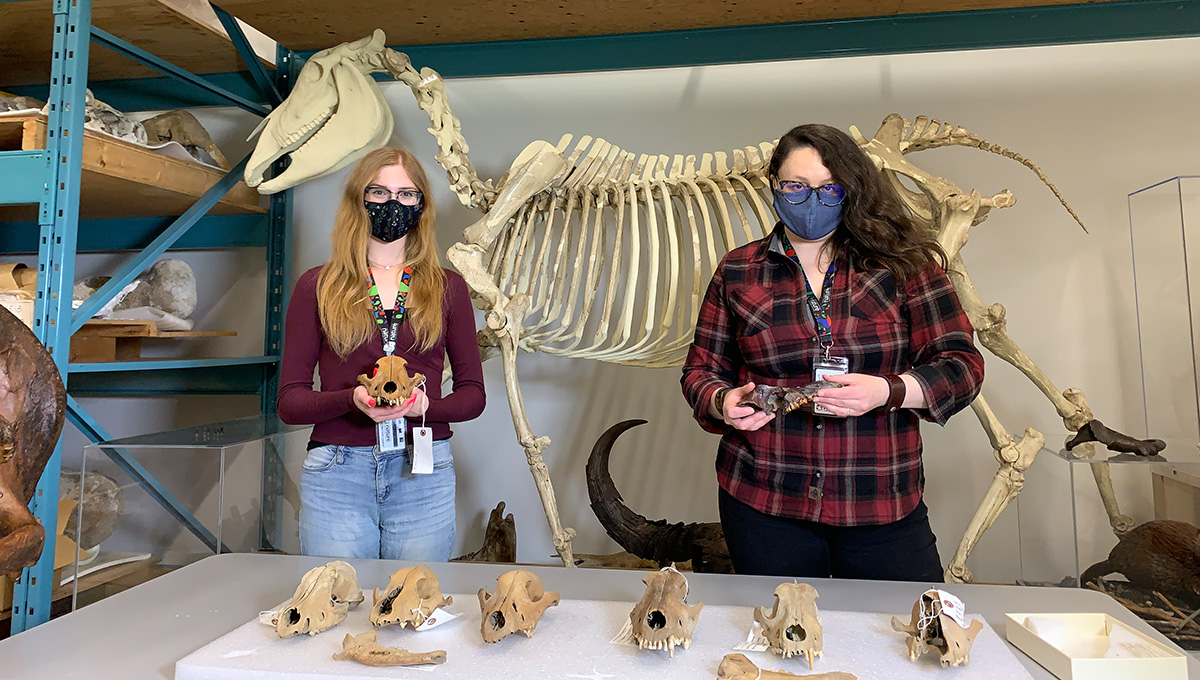
Zoe Landry and Prof. Danielle Fraser with specimens they analyzed to determine that gray wolves survived the last ice age by shifting their diet.
Landry had always loved animals and was interested in extinction, the Arctic and isotope ecology—studying chemical traces in tissue samples to learn about the behaviour of ancient species. As she and Fraser talked, a project was born.
That research—which is detailed in a paper in the June 2021 issue of Palaeogeography, Palaeoclimatology, Palaeoecology, with Landry the lead author—led to the discovery that gray wolves, in what is now the Yukon, were able to shift their diet at the end of the last Ice Age nearly 12,000 years ago, from a primary reliance on horses to caribou and moose, which allowed them to emerge as one of the largest predators to survive the climate change-driven extinction.
This finding—a rare accomplishment for an undergraduate student, although Landry is quick to credit Fraser and their co-collaborators—has implications for today’s conservation efforts. It shows that while certain species are resilient and can successfully adapt, preserving the populations and habitat of potential new food sources is critical.
“The past is the key to the present and the future,” says Landry.
“If we can learn what animals did in the past and how they survived, we can apply that knowledge.
“For gray wolves, the species they fed on didn’t matter. They just needed a sufficient number of large-hooved mammals.”
“Wolves were able to survive a major climate change by switching their prey,” adds Fraser, “but they remained specialists on large animals. If those animals go extinct, we don’t think wolves will be able to cope.”
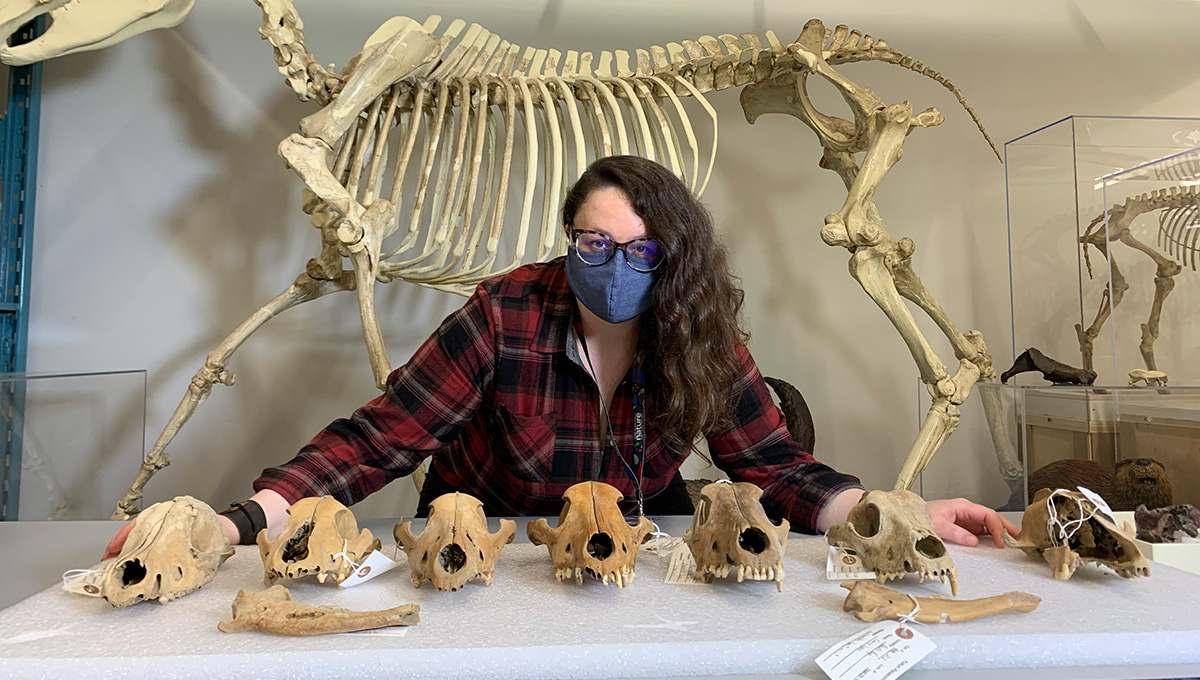
Studying Diets of Ancient Wolves
To do her research, Landry relied on wolf bone samples from the Museum of Nature’s collection and wolf skulls sent to Ottawa from the Yukon.
She used a scanning electron microscope to take extremely magnified images of wolf teeth, then inspected them to determine what type of food material they were eating. Flesh leaves long, straight striations, which Landry observed, while pits would have suggested chewing and gnawing on bones as a scavenger.

Zoe Landry with gray wolf skulls studied for the research project.
The wear patterns she saw, present both before and after the Ice Age extinction, show that the wolves were hunters that maintained a similar diet, not scavengers feeding on scraps and discarded carcasses, even though they were competing with other large carnivores for prey.
In the museum’s molecular DNA lab, Landry also looked at the ratios of carbon and nitrogen isotopes extracted from collagen in wolf bone samples. These data confirmed the dietary shift from mostly horses to caribou and moose.
“I’m a big fan of diet reconstruction studies,” says Landry, who will defend her biology master’s thesis this summer, a project examining ecological changes and the long-term adaptability of polar bears in Nunavut’s Lancaster Sound region, and then start an Earth Sciences PhD at the University of Ottawa next fall.
“The work is challenging and painstaking. It’s like a puzzle. The big picture is there somewhere. You just have to find out where to put all the pieces.”
Sometimes, you can’t finish the puzzle, adds Landry, noting that conservation paleobiology is still a relatively new field.
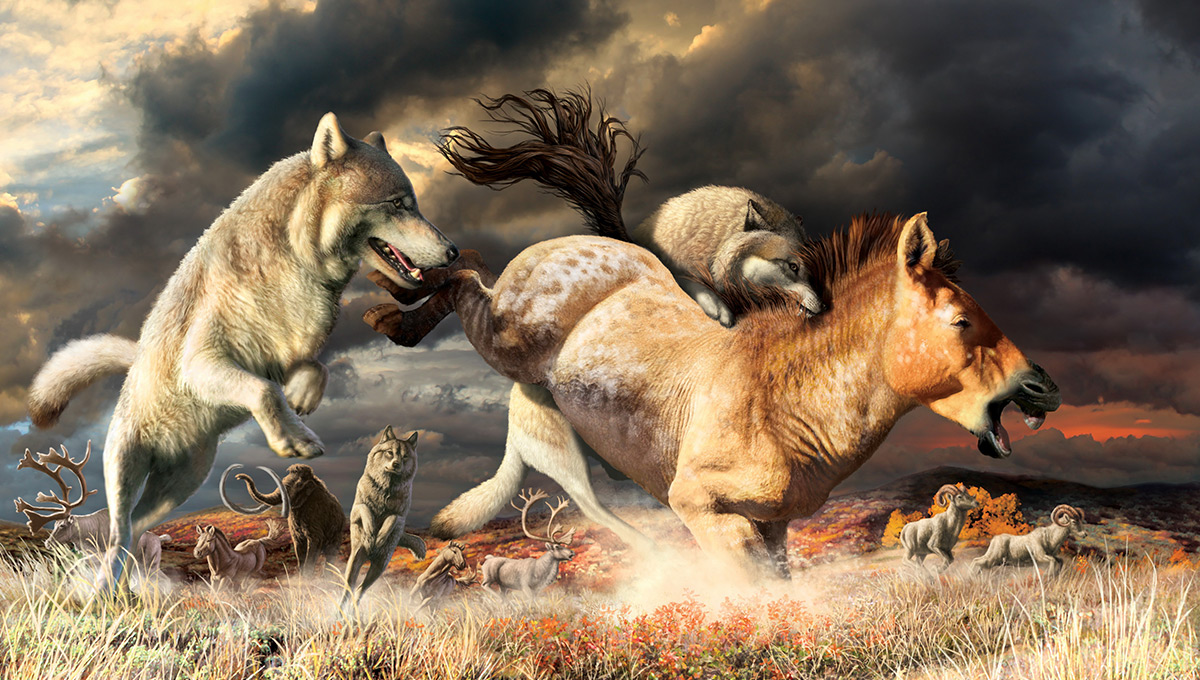
Impressive Research by Undergrad
It’s not unheard of for undergraduate science students to author papers, says Fraser, but it’s unusual—especially when the research produces such an important takeaway message.
Fraser praises Landry’s passion and resilience: “She followed the scientific method, developed and tested ideas, made mistakes, learned from them and kept going.”
A Carleton PhD graduate herself, Fraser has split her time between the university and museum since coming back to Ottawa from a postdoctoral fellowship at Washington’s Smithsonian National Museum of Natural History in 2017.
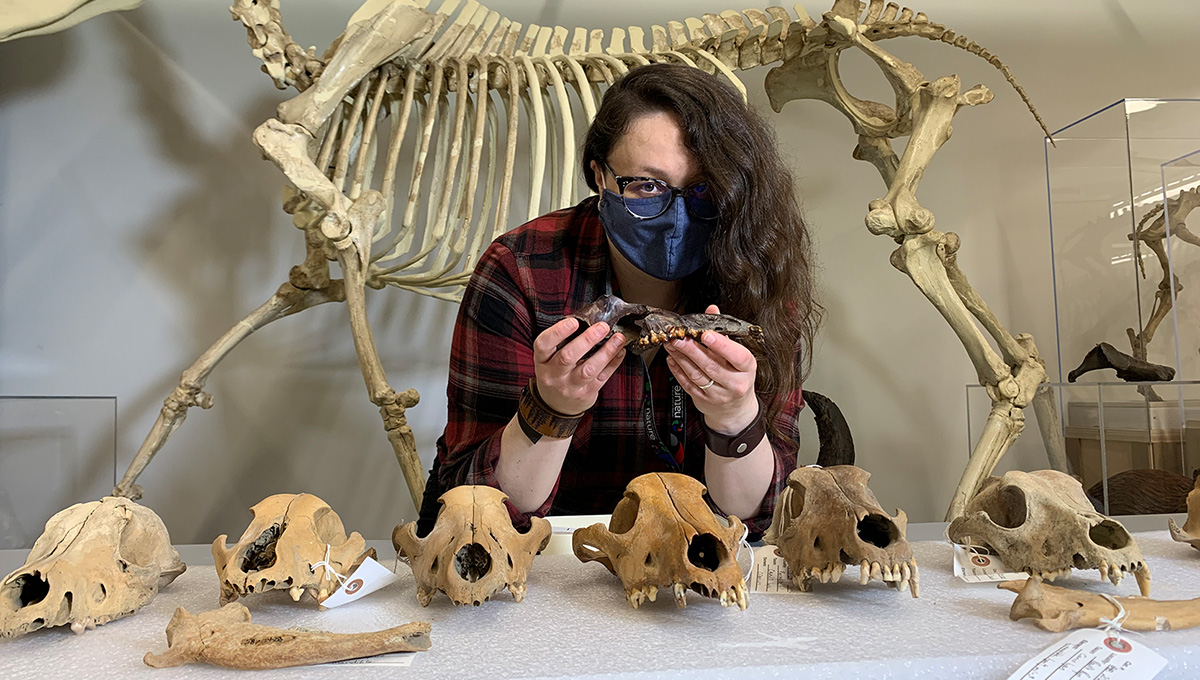
Prof. Danielle Fraser with some of the gray wolf specimens used in the study.
“I have the best of both worlds,” she says.
“I get to be at the museum, with all the fossils at my fingertips, but I also get to interact with all of these great students at Carleton.”
Fraser plans to follow the gray wolf research with a study exploring how the end of the Ice Age impacted Yukon caribou, an “ecosystem engineer” whose travels across tundra and boreal forests distributes nutrients and helps shape the landscape.
This project could lead to knowledge that’s directly applicable to modern climate change, but not all research does, and that’s OK.
“Basic science is important,” says Fraser.
“A lot of research doesn’t link directly to the present day, but lays the groundwork for integrated big-picture science. The fact that Zoe was able to do both shows how much potential she has and reflects the quality of Carleton’s undergraduate programs.”
—
Illustration by Julius Csotonyi, Government of Yukon
Friday, May 28, 2021 in Earth Sciences, Research
Share: Twitter, Facebook

